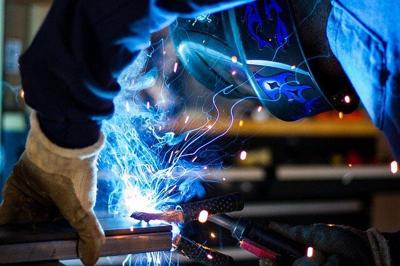
An excellent clean makes a big difference in the success of a welding operation. If you don't clean your equipment and tools, the surface will be covered in dust and dirt, which are the primary culprits behind issues like porosity. Surface preparation and cleaning can also impact the appearance of the final weld and affect the overall operation costs for labor and rework.
It sounds complex, but it can be a straightforward process if you have the right tools and techniques. Some cleaning jobs require the use of an abrasive cleaner like a TIG brushâ "¢. In some cases, you can also finish the job with a chemical solvent or a cloth.
Post-weld and interpass cleaning are also vital steps in the process, depending on the requirements for the finished weld and the application process. Although no two cleaning jobs are the same, you can follow some general best practices to advance your welding skills.
Know Your Options for Weld Cleaning
You don't need a high school degree to learn how to clean a weld well. Fortunately, you'll never run out of options for weld cleaning. There are many choices available for cleaning weld. Consider the following factors when you are thinking about your options.
Material type
Different weld materials require other abrasives. When welding aluminum or stainless steel, you should clean them thoroughly before starting since these materials aren't as forgiving as debris and dirt. Suppose you're going to use heavier-grit abrasives on these materials to prevent damage.
A 40-grit or a 20-grit flap disc is too aggressive for bronze, aluminum, and other non-ferrous metal types. When it comes to material types, keep in mind that the finer the grit, the better it is. You can also use isopropyl alcohol to clean base materials and filler rods before welding.
To prevent damage, use tools designed for stainless steel, such as grinding wheels or stainless steel brushes. Using these tools prevents contaminating the weld during the cleaning process. You can also use these wheels on other materials prone to contamination, such as copper, brass, or aluminum.
Desired outcome
If your weld has aesthetic demands or surface finish requirements, these affect the way you clean it. There are different cleaning products required during the cleaning process, especially if you have the desired finish in mind.
For a good clean, use an abrasive with the heaviest grain or grit allowed by the application. As the job progresses, you can start using a finer grit. If the completed weld is smoother, that's better, especially if the material is powder-coated or painted. If you are welding stainless steel, use a wet cloth for the post-weld cleaning. Using cloth can also help when you coat or treat the metal. This process often uses a pickling paste or acids to reduce the chemical reactivity of the surface.
Code requirements
Many welding projects come with code requirements, especially for inspection. These specifications determine the number of inclusions a finished weld will have.
When it comes to weld cleaning, the general rule of thumb is to use a few steps as possible, especially if you want to save money and time. Using a cleaning product with a finer grit guarantees a slower process, but it balances surface finish requirements and productivity.
Also, avoid introducing debris and dirt into the weld; clean before and during the welding process regardless of the materials you use.
Common Cleaning Tools
The most common weld and surface cleaning options include flap discs/coated abrasives, grinding wheels/bonded abrasives, and wire wheels and brushes. Your choice depends on the operator preference, as well as the application's requirements. Wire brushes and abrasive products have different purposes and performances.
- Grinding wheels/bonded abrasives. If there are porosity or slag inclusions in the weld, you can use a grinding wheel to remove the debris and dirt from the weld. These products are often perfect for cleaning sloppier welds that have spatter or slag or for mild steel. Grinding wheels rely on different combinations of grain size, grain type, and bonding agents (additive fillers and resins) to determine their performance. Since bonded abrasives are more robust and better at removing materials faster, they need a professional touch to prevent undercutting, gouging, and any other damage.
- Flap discs/coated abrasives. These cleaning tools use the same grain types found in bonded abrasives, but instead of being pressed and molded into a stiffer grinding wheel, these discs use grains that are bonded to the cloth.
- Wheels and wire brushes. These cleaners are better for post-weld cleaning or interpass, which are good at removing spatter.
Clean welds and materials are essential for any welding operation. However, there's no such thing as a one-size-fits-all solution. Assess the requirements for the job before you can clean it effectively.



(0) comments
We welcome your comments
Log In
Post a comment as Guest
Keep it Clean. Please avoid obscene, vulgar, lewd, racist or sexually-oriented language.
PLEASE TURN OFF YOUR CAPS LOCK.
Don't Threaten. Threats of harming another person will not be tolerated.
Be Truthful. Don't knowingly lie about anyone or anything.
Be Nice. No racism, sexism or any sort of -ism that is degrading to another person.
Be Proactive. Use the 'Report' link on each comment to let us know of abusive posts.
Share with Us. We'd love to hear eyewitness accounts, the history behind an article.